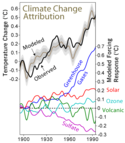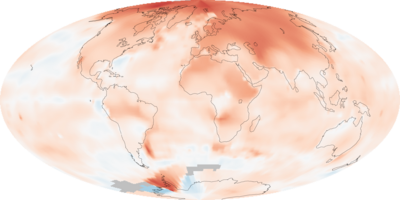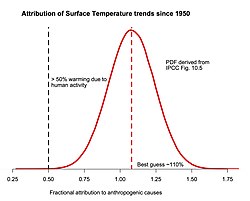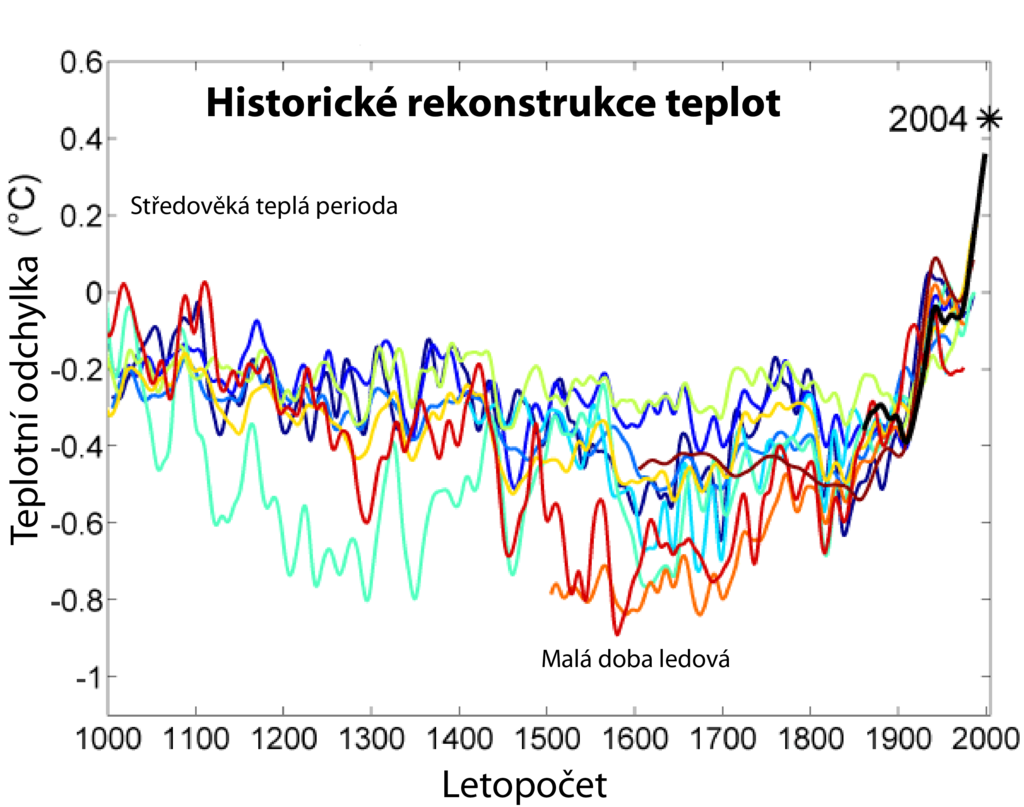1000 Year Temperature Comparison cs
Color Guide
The reconstructions used, in order from oldest to most recent publication are:
- (dark blue 1000-1991):
- (blue 1000-1980):
- (light blue 1000-1965):
- (lightest blue 1402-1960):
- (light green 831-1992):
- (yellow 200-1980):
- (orange 200-1995):
- (red-orange 1500-1980):
- (red 1-1979):
- (dark red 1600-1990):
- (black 1856-2004):
Notes
Relevantní obrázky





Image source: Canty, T., Mascioli, N. R., Smarte, M. D., and Salawitch, R. J.: An empirical model of global climate – Part 1: A critical evaluation of volcanic cooling, Atmos. Chem. Phys., 13, 3997–4031, https://doi.org/10.5194/acp-13-3997-2013, 2013.
Original plot: US National Climate Assessment 4.
Merging of factors into composite lower panel and common °F scale: User:RCraig09.
Translation and °C scale: User:DeWikiMan, CC BY-SA 4.0










Relevantní články
Hokejkový grafHokejkový graf je přezdívka, kterou dostal graf rekonstrukce průběhu teplot z proxy dat za posledních 500 až 2000 let. Tyto rekonstrukce ukázaly relativně lineární průběh teplot od středověku až do roku 1900 a poté náhlý vzestup, kde instrumentální záznamy teplot v roce 2000 překročily všechny předchozí rekonstrukce teplot za toto období. Termín hokejka použil poprvé Jerry Mahlman, když popisoval graf z práce Mann, Bredley a Hughes 1999 s tím, že relativně lineární část grafu od středověku do roku 1900 připomíná hůl hokejky, zatímco náhlý nárůst v posledních letech připomíná její čepel. Tato rekonstrukce byla použita ve zprávách IPCC jako důkaz současného globálního oteplování. Různé skupiny lidí začaly tento graf zpochybňovat a tím zpochybňovat celé výzkumy globálního oteplování. .. pokračovat ve čtení
Atribuce probíhající klimatické změnyAtribuce probíhající klimatické změny, nebo připisování probíhající klimatické změny jednotlivým příčinám je úsilí vědecky zjistit mechanismy odpovědné za probíhající globální oteplování a související změny klimatu na Zemi. Úsilí se zaměřilo na změny pozorované během období instrumentálních teplotních záznamů, zejména za posledních 50 let. To je období, kdy se lidská činnost nejvíce zintenzivněla a zároveň jsou k dispozici detailní pozorování troposféry. Podle Mezivládního panelu pro změnu klimatu (IPCC) je „extrémně pravděpodobné“, že lidský vliv byl v letech 1951 až 2010 dominantní příčinou globálního oteplování, podle některých zdrojů bylo pozorované oteplování od roku 1951 způsobeno výhradně lidmi. .. pokračovat ve čtení
